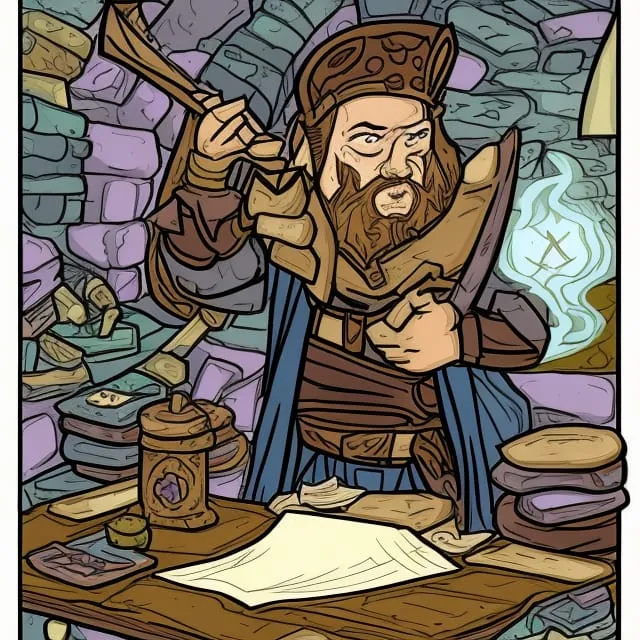scrap princess made an interesting post criticising how some 5e spells are pretty bland. I’ve got two mechanic-based spells that come right to mind that I’d like to make more story-based, without altering the level too much (though, really not caring too much about that). My aim is to take these spells from a crunchy exploit of the rules, to something actually usable in more than one situation.
Sleep
I dislike Sleep and write it off as nearly useless. I’ve seen it used many times and can remember the times it actually worked. You’re going to get 22 HP of creatures to fall to sleep (including allies, making the spell even more useless as you can’t use it in a dire straights moment). Even at level 1, if you’re in a fight where you feel the need to use more than cantrips, the bad guy you’re up against is going to have more than 22 HP. That 22, lets remember, is the average; you’re just as likely to roll under it.
The spell’s job is to temporarily knock an enemy out of combat, rarely more than one but sometimes. That’s its only real purpose. The single minute it lasts for means outside of combat it’s not great. Let’s change it.
Sleep. 1st level Enchantment.
1 action. Range: 90 feet. Components: Whispered voice, a dried cricket which is used up by the spell. Duration: 1 hour. Concentration. Wisdom save.
The cricket is brought back to life by your whispered spell. Once given a description of the target, it will do its best to seek them out within the range of where the spell was cast. The cricket can move up to 60 feet on the caster’s turn, including its first turn.
When it comes into contact with any conscious creature (other than the caster), that creature must make a Wisdom saving through or else be put into a magical sleep for the duration, or until they take damage. This happens regardless of if the creature is wearing armour or other gear.
Upon contact, upon being killed, or at the end of the duration of the spell, the cricket crumbles into sand.
Using a higher level spell slot increases the potency of the sleep. 3rd level or higher: Duration increases to 24 hours. 5th level or higher: Spell has no duration and is only bound by Concentration.
Now the spell lasts a whole hour. One minute was clearly marking the spell as a combat one – “1 minute” being mechanical lingo for “oh, just an entire fight, I guess”. Now it has a bunch more utility. You can use it to sleep the security guard, carry out your entire heist, and be gone again before he notices anything.
Allowing this to be extended to a day or longer, is mostly to allow the spell to be used as a quest hook; our train driver has stopped responding from beyond his impenetrable compartment, and the train is quickly coming to the end of a line with no sign of slowing down. Our only hope is to find the evil wizard who’s put the driver under their spell and break their Concentration!
The cricket can hang around for a while too, by the way. Just waiting for someone that looks like the described target. The caster could be long gone by then, leaving the cricket to jump into the arms of whoever follows after them.
This is much cooler. It’s more useful. More likely to work (especially as it gets better as you get better at controlling your magic). And it’s just more fun. Meanwhile, it’s still only temporary, requiring just a shove (to the sleeper, or the caster to break their Concentration). It only affects one creature now. It can’t actually do any damage. And, if the DM was mean enough, the cricket can just be avoided by the target. A wizard would know exactly what that insect dashing right towards them was up to – they’d be trained to spot it.
It’s for sure still within the realms of a level 1 spell.
Gentle Repose
Which sane cleric is going to give up a prepared spell slot for this? At best it’s a “just in case a party member dies” spell, which rarely happens. During the 10 days of the spell, the “dead” PC has no idea if they should roll another character or not – sitting and watching like an audience member, rather than playing a game. It’s not a good spell to take. Even if your cleric was committed to their keeping-you-idiots-alive role, the game is less fun for them because they can’t take Zone of Truth or Spiritual Weapon or Silence.
Gentle Repose (Ritual) 2nd level Necromancy.
1 action. Range: Touch. Components: A cry for help, a gathering gesture over the body, a donation which the spell will consume. Duration: See description.
A wordless shadow wrenches itself from the wounds, mouth, ears, and nose of the corpse or other remains that you are touching. It holds out a hand.
An offer is expected and taken by the shadow. This needn’t be just gold. The DM decides on the worthiness of the offer.
Pitiful: 1d4 + 2. Decent: 1d10 + 2. Respectful: 1d20 + 2.
The DM rolls this to determine how long the shadow is willing to reanimate the corpse for. They become undead and are not considered dead. For the duration or until returned to life, the corpse loses all proficiencies. It remembers little of its previous life and struggles to talk. This is not a comfortable life.
So now it’s a useful spell! Suddenly you’ve got FOUR HOURS to find someone who can revive your friend. Just four hours to find that 600 gold pieces the clerics want as a “donation” – if you can even find a cleric willing to deal with this (now undead) situation.
The body may be a lumbering, dazed buffoon, but your player still gets to play themselves. Impose disadvantage on everything they do (as if poisoned) to really reinforce that they’re only glued to their body and not fully in control. A resurrection is the only way to fix this. Even after you’re back, you have to ask yourself, what was that shadow inside you? Your soul? A demon? Do we all have that inside us..?
Alternatively, do the ritual on a dead horse and flee from the inevitable TPK.
The spell shouldn’t replace Speak with Dead, which is why the ability to do finessed skills like talking is limited. Even so, is this spell a whole bunch more powerful than its original? Sure. It’s also more fun, more useful, and adds in some story. It’s now a spell worth taking, and leans into the necromancy territory properly, which Wizards seem terrified of doing.
I showed this to a few friends before publishing it, and let me tell you they were outraged with how I’ve treated these poor spells. They were quite right to be in some instances, and yet I refute them all! I’ll be posting a follow up explaining how wrong they are.




